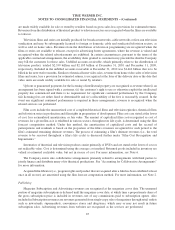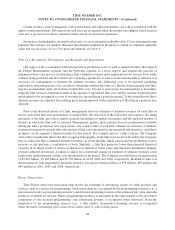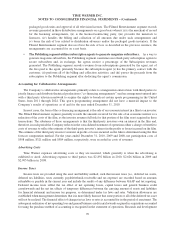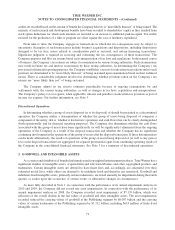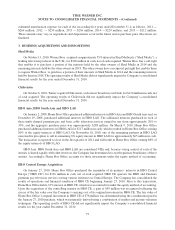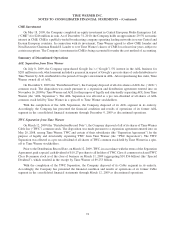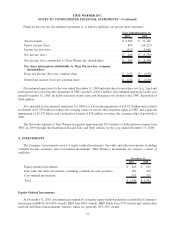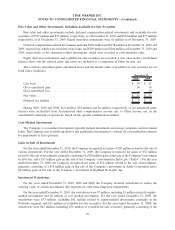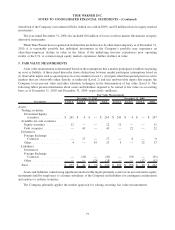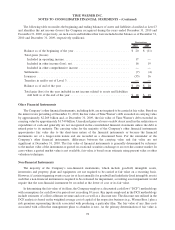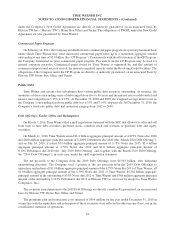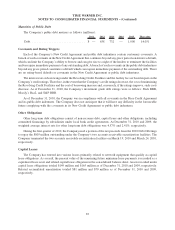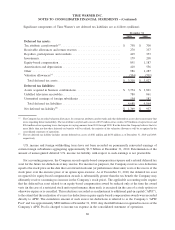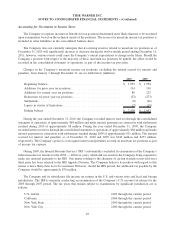Time Magazine 2010 Annual Report Download - page 89
Download and view the complete annual report
Please find page 89 of the 2010 Time Magazine annual report below. You can navigate through the pages in the report by either clicking on the pages listed below, or by using the keyword search tool below to find specific information within the annual report.
writedown of the Company’s investment in Eidos (which was sold in 2009), and $2 million related to equity-method
investments.
The year ended December 31, 2008 also included $10 million of losses to reflect market fluctuations in equity
derivative instruments.
While Time Warner has recognized all declines that are believed to be other-than-temporary as of December 31,
2010, it is reasonably possible that individual investments in the Company’s portfolio may experience an
other-than-temporary decline in value in the future if the underlying investee experiences poor operating
results or the U.S. or certain foreign equity markets experience further declines in value.
5. FAIR VALUE MEASUREMENTS
A fair value measurement is determined based on the assumptions that a market participant would use in pricing
an asset or liability. A three-tiered hierarchy draws distinctions between market participant assumptions based on
(i) observable inputs such as quoted prices in active markets (Level 1), (ii) inputs other than quoted prices in active
markets that are observable either directly or indirectly (Level 2) and (iii) unobservable inputs that require the
Company to use present value and other valuation techniques in the determination of fair value (Level 3). The
following tables present information about assets and liabilities required to be carried at fair value on a recurring
basis as of December 31, 2010 and December 31, 2009, respectively (millions):
Description Level 1 Level 2 Level 3 Total Level 1 Level 2 Level 3 Total
December 31, 2010 December 31, 2009
Fair Value Measurements
Assets:
Trading securities:
Diversified Equity
securities.............. $ 261 $ 4 $ — $ 265 $ 243 $ 4 $ — $ 247
Available-for-sale securities:
Equity securities .......... 12 — — 12 11 — — 11
Debt securities ........... — 41 — 41 — 22 — 22
Derivatives:
Foreign Exchange
Contracts ............. — 17 — 17 — 8 — 8
Other .................. 4 — 19 23 5 — 32 37
Liabilities:
Derivatives:
Foreign Exchange
Contracts ............. — (20) — (20) — (91) — (91)
Other .................. — — (28) (28) — — (12) (12)
Total .................... $ 277 $ 42 $ (9) $ 310 $ 259 $ (57) $ 20 $ 222
Assets and liabilities valued using significant unobservable inputs primarily consist of an asset related to equity
instruments held by employees of a former subsidiary of the Company and liabilities for contingent consideration
and options to redeem securities.
The Company primarily applies the market approach for valuing recurring fair value measurements.
77
TIME WARNER INC.
NOTES TO CONSOLIDATED FINANCIAL STATEMENTS – (Continued)


